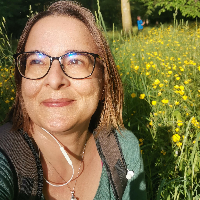Preprint
Article
Temporal and Spatial Variability of Volatile Organic Compounds in the Forest Atmosphere
Altmetrics
Downloads
218
Views
333
Comments
0
A peer-reviewed article of this preprint also exists.
This version is not peer-reviewed
Submitted:
20 November 2019
Posted:
21 November 2019
You are already at the latest version
Alerts
Abstract
Forest healing effects are increasingly valued for their contribution to human psychological and physiological health, motivating further advances aimed at improving the knowledge of the relevant forest resources. Biogenic volatile organic compounds, emitted by the plants and accumulating in the forest atmosphere, are essential contributors to the forest healing effects, and represent the focus of this study. Using a photoionization detector, we investigated the high frequency variability, in time and space, of the concentration of total volatile organic compounds, on a hilly site, as well as along forest paths and long hiking trails on Italian northern Apennines. The scale of concentration variability was found to be comparable to absolute concentration levels, within time scales of less than one hour, and spatial scales of several hundred meters. During daylight hours, the concentration peaked from noon to early afternoon, followed by early morning, with lowest levels in late afternoon. Based on a conceptual model, these results were related to meteorological variables, including the atmospheric vertical stability profile. Moreover, preliminary evidence pointed to higher concentration of volatile organic compounds in forests dominated by conifer trees, in comparison with pure beech forests.

Keywords:
Subject: Biology and Life Sciences - Biochemistry and Molecular Biology
Copyright: This open access article is published under a Creative Commons CC BY 4.0 license, which permit the free download, distribution, and reuse, provided that the author and preprint are cited in any reuse.
MDPI Initiatives
Important Links
© 2024 MDPI (Basel, Switzerland) unless otherwise stated







